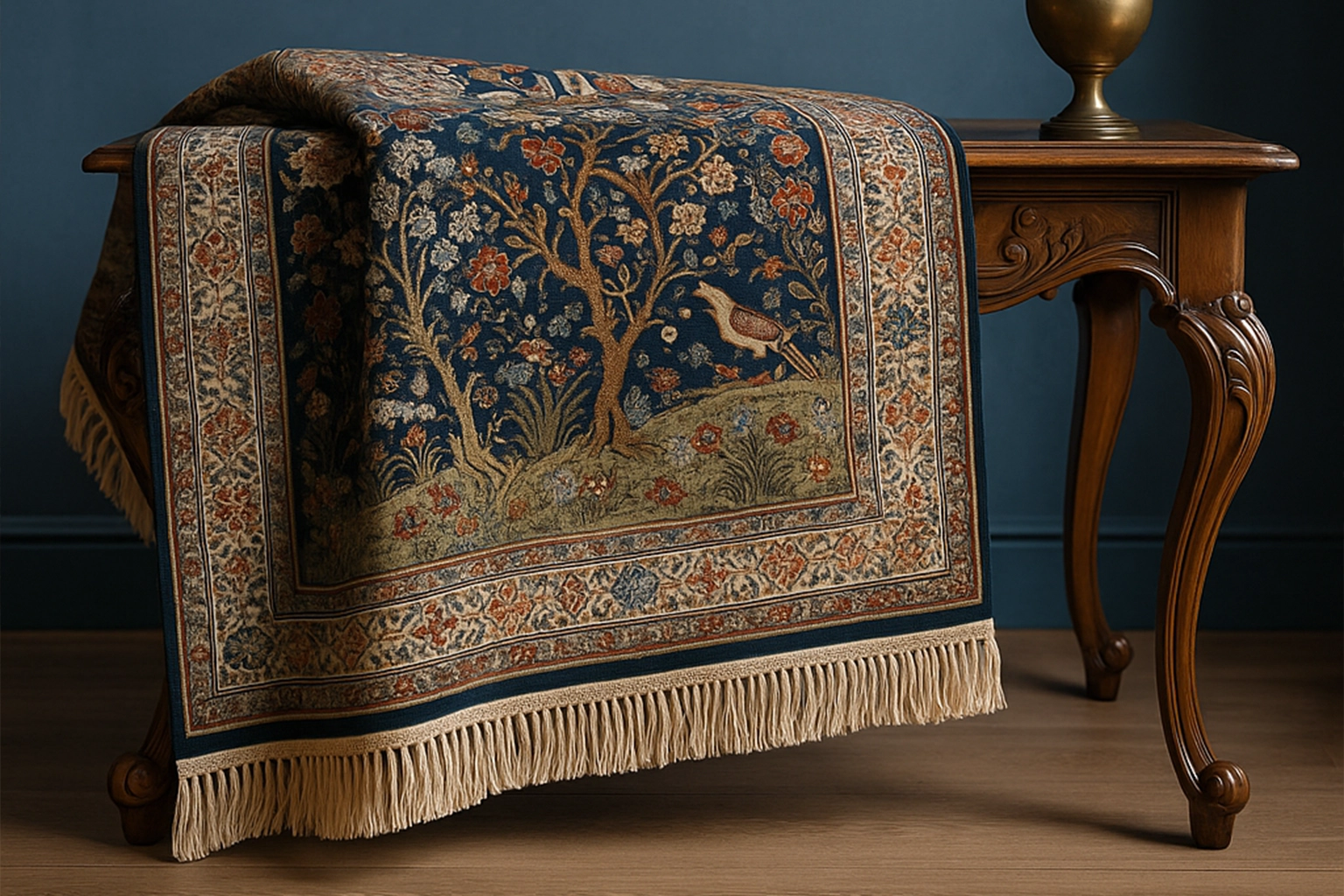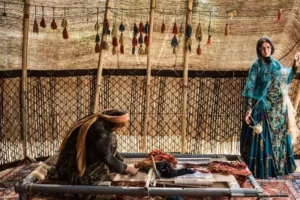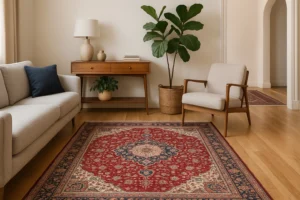Introduction
Persian silk rugs are not just decorative pieces—they are cultural treasures, handwoven legacies, and investments in both beauty and heritage. Among all Persian carpets, silk rugs are considered the most luxurious due to their shine, softness, and incredible knot density. In this article, we’ll explore what makes Persian silk rugs so valuable and why they remain highly sought after by collectors, designers, and art lovers worldwide.
What Is a Persian Silk Rug?
A Persian silk rug is a hand-knotted carpet made entirely or partially of silk. These rugs are often produced in regions such as Qom, Isfahan, and Nain. Silk can be used for the pile, the foundation, or both, creating a sheen and delicacy that sets these rugs apart from wool or cotton alternatives.
Why Are Persian Silk Rugs So Expensive?
1. Material Quality
Silk is significantly more expensive than wool. It’s finer, lighter, and requires more intricate handling during weaving. Persian rugs made with pure silk gleam under light and feel luxuriously smooth to the touch.
2. High Knot Density
Silk rugs allow weavers to create extremely detailed designs because silk threads are thinner and more flexible. Knot densities often range from 600 to 1,000+ knots per square inch, which can take months—or even years—to complete.
3. Labor Intensity
Each rug is hand-knotted by skilled artisans. The process involves thousands of hours, deep concentration, and generations of expertise.
4. Artistic Complexity
Many Persian silk rugs depict complex scenes such as gardens, historical events, or spiritual motifs. These intricate designs require master-level weavers and deep cultural knowledge.
Where Are the Best Persian Silk Rugs Made?
Qom
Known as the heart of Persian silk rug production. Qom rugs are prized for their fine weave, spiritual themes, and vibrant color palette.
Isfahan
Rugs from Isfahan are known for their balance and symmetry, often featuring central medallions, floral patterns, and a palette of ivory, blues, and reds.
Nain
Silk rugs from Nain often blend wool and silk, producing elegant, soft carpets with a calm, often pastel color scheme.
How to Tell if a Persian Silk Rug Is Real
- Burn Test: Silk smells like burnt hair; synthetic smells like plastic.
- Visual Test: Genuine silk glows under light and changes tone when viewed from different angles.
- Touch Test: Silk feels cool and smooth, not sticky or plasticky.
- Label & Origin: Always check for a label mentioning the origin (e.g., “Handmade in Qom, Iran”).
Uses of Persian Silk Rugs
- Decorative Centerpieces in living rooms, libraries, or halls
- Wall Art: Many are hung like paintings due to their detail and rarity
- Heirloom Investments: Passed down for generations, gaining value over time
- Luxury Gifts: Common among royal and diplomatic circles
How to Care for a Silk Rug
- Avoid high-traffic areas to prevent wear
- Keep away from direct sunlight to prevent fading
- Vacuum gently without rotating brushes
- Professional cleaning only every 2–3 years
Are Persian Silk Rugs a Good Investment?
Absolutely. Genuine Persian silk rugs increase in value over time, especially those from Qom and Isfahan with certified provenance. They are timeless, culturally significant, and rare.
Why Choose Pasha Carpet?
At Pasha Carpet, we offer 100% hand-knotted silk rugs directly from Qom. Each rug comes with a certificate of authenticity and is photographed professionally for accurate online representation. We offer global shipping, expert consultations, and a passion for sharing Persian culture with the world.
Conclusion
Persian silk rugs are more than luxurious floor coverings—they are works of art, stories woven in silk, and investments that appreciate over time. Whether you’re a collector, a decorator, or simply someone with an eye for fine craftsmanship, owning a Persian silk rug is owning a piece of history.
Explore our curated collection of silk rugs now and find the piece that speaks to you.



